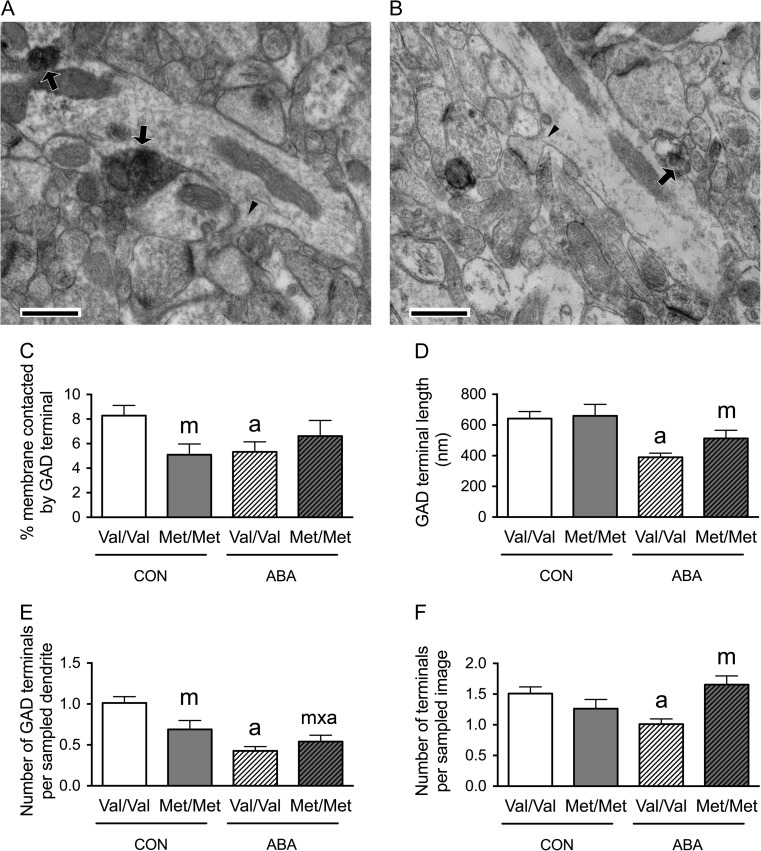Figure 5.
Electron microscopic identification of GAD-immunoreactive axon terminals contacting distal spiny dendrites in Layer I of the prelimbic cortex of WT (A) and BDNFMet/Met (B) brains at P60. In both Panels A and B, arrows point to portions of the plasma membrane contacted by GAD-immunoreactive axon terminals. Arrowheads point to the spine neck connecting spine heads to dendritic shafts. Calibration bars = 500 nm for both panels. (C) Comparisons of dendritic profiles revealed that BDNFMet/Met reduces the proportions of the plasma membrane contacted by GAD-immunoreactive axon terminals under the control condition. Dendrites from the WT brains following ABA were less covered by GAD-immunoreactive axon terminals, compared with dendrites of WT brains under the control condition. (D) The experience of ABA decreased contact lengths of the GAD-immunoreactive axon terminals in WT brains but not in BDNFMet/Met brains. (E) Dendrites of both the BDNFMet/Met and WT ABA brains showed decreased number of GAD-immunoreactive axon terminals forming synapses upon sampled dendrite, compared with dendrites of WT controls. (F) BDNFMet/Met increased the number of GAD-immunoreactive axon terminals per sampled area under the ABA condition. ABA decreased the number of GAD-immunoreactive axon terminals per sampled area in WT neuropil. Bar graphs represent means ± SEM. “m” indicates statistically significant genotype effect, based on comparisons with CON brains under the same genotype (WT or BDNFMet/Met) by the Mann–Whitney U-test. “m × a” indicates statistically significant effect of ABA upon BDNFMet/Met brains, when compared with values from the WT control group by the Mann–Whitney U-test.

